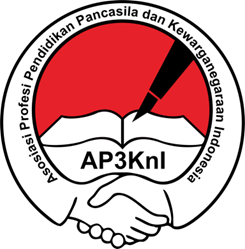The Effect of Using Crossword Puzzle Model on Learning Interest in Indonesian Learning Based On Students' Literacy
DOI: https://doi.org/10.26618/jed.v8i1.9054
Crossword Puzzle Model, Indonesia learning, students' interest, students’ literacy
Abstract
Well-designed learning media will be more assist students in achieving high learning outcomes. However, the facts on the ground show that teachers have not optimally used instructional media so that students tend to get low learning outcomes. This study aims to determine the effect of using the Crossword Puzzle Model on students' learning outcomes in learning Indonesian. This research used an experimental study with a quasi-experimental method which was analyzed with distributive analysis and inferential analysis which aims to determine the effect of using the Crossword Puzzle model on learning outcomes of Indonesian language for the third grade students of SD Inpres Sero Gowa. The population in this study was all the third class and the sample in this study were 35 students of class III. The instrument for collecting data is carried out using statements that must be answered by respondents related to the questionnaire. The form of the questionnaire to measure students' learning outcomes is multiple choice. Technique Data analysis was used to examine the truth of the proposed hypothesis based on the variables studied, namely descriptive data analysis and inferential data analysis. Research result showed that there is an effect of using the crossword puzzle model on students' learning outcomes in learning Indonesian by obtained t-count > t-table or 5.52 > 1.68488, it found that H0 was rejected and H1 was accepted, which means that crossword puzzle learning has an effect on Indonesian language learning outcomes in third grade students of SD Inpres Sero Gowa. It can be concluded that there is a significant impact of crossword puzzle media on students' learning outcomes in learning Indonesian in class III SD Inpres Sero Gowa.References
Agarwal, H. K., Singhal, A., & Yadav, A. K. (2020). Crossword puzzle: An innovative assessment tool to improve learning of students in forensic medicine. Medico-Legal Update, 20(1), 18–22. https://doi.org/10.37506/v20/i1/2020/mlu/194286
Ahmad Riynaldiy, Rizki Aldea, Syafrisya Fazhari, M.Fernanda, S. L. I. (2019). PEMBELAJARAN BAHASA INDONESIA AKTIF BERBASIS APLIKASI SARPU (SMART CROSSWORD PUZZLE). Jurnal Sains Penelitian & Pengabdian, 2(19).
Akhiruddin;Sujarwo, Atmowardoyo, H., & H, N. (2019). Belajar dan Pembelajaran. CV. Cahaya Bintang Cemerlang.
Aswat, H., Tayibu, K. N., & Satriawati. (2022). Teacher Managerial Strategy in Building Character Education During The Covid-19 Pandemic. Ijoleh : International Journal of Education and Humanities, 1(1), 82–94. https://jurnal-eureka.com/index.php/ijoleh/article/view/42
Bokingo, O., Supartin, S., & Odja, A. H. (2022). The Effect Of Discovery Learning Models With Blended Learning Strategies Assisted By Crossword Puzzle Media On Understanding Physics Concepts. SEJ (Science Education Journal), 6(1), 35–47. https://doi.org/10.21070/sej.v6i1.1620
Cohen, L., Manion, L., & Morrison, K. (2017). Research Methods in Education. In Research Methods in Education. https://doi.org/10.4324/9781315456539
Creswell, J. W. (2021). A concise introduction to mixed methods research. SAGE publications.
Gaikwad, N., & Tankhiwale, S. (2012). Crossword puzzles: self-learning tool in pharmacology. Perspectives on Medical Education, 1(5–6), 237–248. https://doi.org/10.1007/s40037-012-0033-0
Irmawanty, I. (2022). The effect of crossword puzzle media on interest and cognitive learning outcomes of students on the classification of living things class X SMA Negeri 9 Makassar. , 1(1), 12-18. Hybrid: Journal of Science Education and Learning.
Kalkan, N., Güler, S., Bulut, H., & Ay, A. (2022). Views of students on the use of crossword and word search puzzle as a teaching technique in nursing education: A mixed-method study. 105542. Nurse Education Today.
Khair, U. (2018). Indonesian Language and Literature Learning (BASASTRA) in SD and MI. 2(1), 81. AR-RIAYAH: Journal of Basic Education.
Kumar, R. (2011). RESEARCH METHODOLOGY a step-by-step guide for beginners (3rd editio). SAGE Publications Ltd.
Latifah, U. (2017). Aspects of development in elementary school children: Problems and their development. 1(2), 185-196. Academica: Journal of Multidisciplinary Studies, 1(2).
Milkova, E., Vymetalkova, D., & El-Hmoudova, D. (2015). Practicing and reinforcing skills using puzzles. 182, 660-667. Procedia-Social and Behavioral Sciences.
Mshayisa, V. V. (2020). Students’ perceptions of Plickers and crossword puzzles in undergraduate studies. Journal of Food Science Education, 19(2), 49–58. https://doi.org/10.1111/1541-4329.12179
Nurhayati, T., Alfiani, D. A., & Setiani, D. (2019). The Effect of Crossword Puzzle Application on The Students’ Learning Motivation in Science Learning. Al Ibtida: Jurnal Pendidikan Guru MI, 6(1), 124. https://doi.org/10.24235/al.ibtida.snj.v6i1.4186
Ramadhania, S. (2022). Pengembangan Media Pembelajaran Crossword Puzzle Untuk Meningkatkan Penguasaan Kosakata Bahasa Indonesia Siswa Sekolah Dasar Kelas II. Jurnal Educatio, 8(3), 966–971. https://doi.org/10.31949/educatio.v8i3.3042
Ritonga, A. W., Ritonga, M., Septiana, V. W., & Mahmud. (2021). Crossword puzzle as a learning media during the covid-19 pandemic: HOTS, MOTS or LOTS? Journal of Physics: Conference Series, 1933(1). https://doi.org/10.1088/1742-6596/1933/1/012126
Rohman, T., Surachmi, S., & Murtono. (2021). The influence of think pair share model and crossword puzzle to increase primary school students’ mathematical learning interest. Journal of Physics: Conference Series, 1823(1). https://doi.org/10.1088/1742-6596/1823/1/012093
Sasabone, L., & Jubhari, Y. (2021). The Implementation of English for Specific Purposes ( ESP ) in Improving Students Speaking Skill of UKI Paulus Makassar. EDULEC: Education, Language and Culture Journal, 1(1), 1–8.
Shawahna, R., & Jaber, M. (2020). Crossword puzzles improve learning of Palestinian nursing students about pharmacology of epilepsy: Results of a randomized controlled study. Epilepsy and Behavior, 106, 107024. https://doi.org/10.1016/j.yebeh.2020.107024
Sujarwo; Sukmawati;Yahrif, M. (2019). Improving Students’ English Learning Outcomes through PQ4R (Preview, Question, Read, Reflect, Recite, Review) Learning Model at the Eighth Grade Students of SMP Tunas Bangsa Makassar. Celebes Education Review, 1(2), 48–55. https://doi.org/https://doi.org/10.37541/cer.v1i2.228
Sukmawati,S;Sabillah, B. . (2020). Strategi Pembelajaran Bahasa Inggris pada siswa TK IT Fajar Mannuruki Kabupaten Maros Berbasis Animasi. Indonesia Berdaya, 1(1), 1–7.
Syofiani, S., Zaim, M., Ramadhan, S., & Agustina, A. (2018). Peningkatan Keterampilan Berbahasa Siswa Melalui Pemanfaatan Media Teka-Teki Silang: Menciptakan Kelas Yang Menyenangkan. Jurnal Ta’dib, 21(2), 87. https://doi.org/10.31958/jt.v21i2.1232
Wilson, E., & Abibulaeva, A. (2017). An Introduction to Educational Research (In English, Russian and Kazakh).



